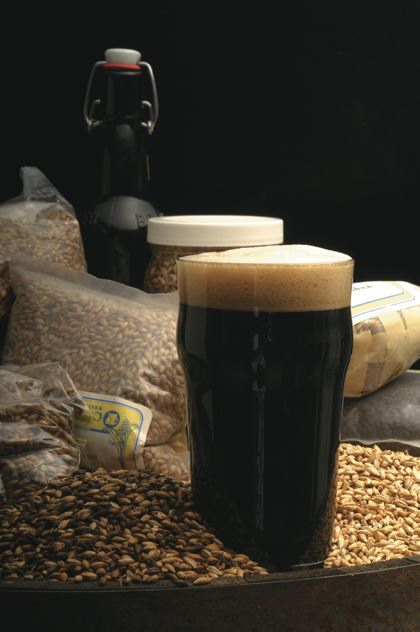Porter is likely the world’s most confusing beer style. Attempting to unravel its inner secrets through diligent scholarship is futile: the more you study it, the more incomprehensible it becomes. A true shape-shifter of a beer, porter changes continually, generation after generation. In trying to decide what a porter should be today, the would-be porter brewer has to take an educated stab—then shut up and brew.
Baltic porter offers opportunities for enlightened deviance.

(Kinsley Dey)
We will never know what the original porter tasted like. Never mind that the original porter wasn’t even called “porter” except in hindsight—but that’s another (confusing) story, one well-told in Martyn Cornell’s Beer: the Story of the Pint. Porter, as you may know, went extinct in its native isles when Guinness stopped brewing it in 1974; everything since then has been a recreation.
British Muscle
Britain in the late 18th century was an industrial powerhouse such as the world had never seen. Vast industrial capacity led to a burgeoning export market, and beer was a major player. The relatively undeveloped North, up the Baltic to Scandinavia and all the way to Russia, was thirsty for well-brewed beers. Rich brown beers were especially prized, first from Burton and eventually from London as well. A range of beers was shipped there, in various strengths, but most were relatively dark and sweet, as local taste demanded. All were strong to endure shipping; some were blindingly so.
As is usually the case, the people importing a beer eventually figure out how to brew it themselves, saving a buck or two while pumping up the local economy. Porter took hold in its chilly new homeland, boosted by Germanic lager traditions that arrived by way of Denmark, Prussia and elsewhere.
The inefficiencies of Communism created a “if it ain’t broke, don’t fix it” mentality. Perhaps “if it ain’t absolutely falling down on our heads, don’t fix it” might be more to the point, but updating moldy old beer styles had a pretty low priority in the face of the Cold War’s threat of total nuclear annihilation. This unique historical situation sustained a bit of old porter. It doesn’t explain how a few of these porters also survived in Scandinavia, but I’m sticking to my story. Baltic porters capture the imagination, transporting one back to an earlier era.









